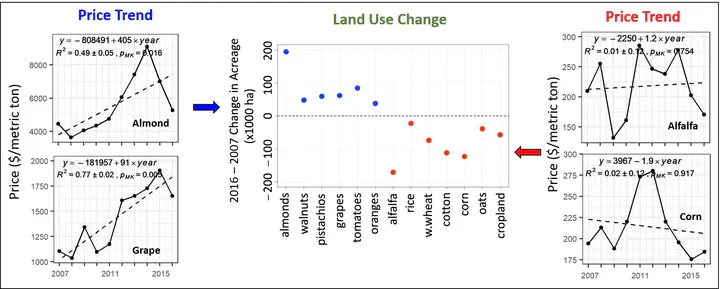What Drives Crop Land Use Change during Multi-Year Droughts in California’s Central Valley? Prices or Concern for Water?
Abstract
The recent multi-year droughts in California have highlighted the heightened risk of longer and more intense droughts, thus increasing the interest in understanding potential impacts for major economic activities, such as agriculture. This study examines changes in cropping pattern in California’s Central Valley between 2007 and 2016 in response to two consecutive droughts (2007–2009 and 2012–2016), factors driving these changes, and the impact of these changes on groundwater level. Results indicate that Central Valley experienced a shift in cropping pattern from alfalfa, cereals (rice, winter wheat, corn, and oats), and cotton, to nut (almonds, walnuts, and pistachios) and fruit (grapes, oranges, and tomatoes) tree crops. This shift in cropping pattern was likely driven by high crop prices, increasing trend in crop price, and increasing water pumping cost, particularly in the relatively water-stressed southern parts of Central Valley. While the total cropland water use for Central Valley remained the same during 2007–2016 (during both wet and dry years), they vary from county to county. Some counties experienced large reductions in cropland water use, while other counties experienced large increases in cropland water use, indicating the need for county-specific water resource management. The results also indicate that both land management (determining size of fallow land), as well as crop management (choice of crop types), are key factors in water resource management.
